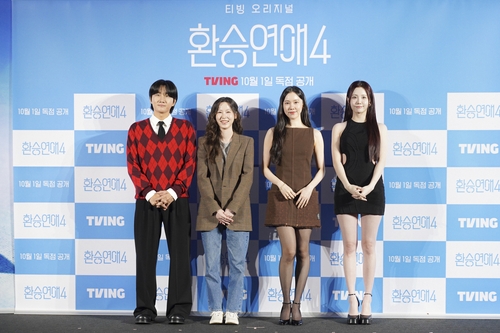The contestants reveal emotions quickly, often seeming unselfconscious in front of the cameras.
The show's defining twist—ex-partners living together while meeting new people—remains intact.
The tension between quick immersion and unhealthy overinvolvement is the season's main theme.
Speed and Feeling: Where Is Season 4 Headed?
Overview
Speed is central.
Since its debut in 2021, Transfer Love has become a staple of dating reality TV in Korea (a country with a very active entertainment industry).
Season 4 stands out primarily for how fast the story moves and how direct contestants are about their feelings.
That shift looks like the result of producers responding to social dating trends as well as deliberate production choices.
The format itself is simple.
Ex-couples live under one roof, meet new people, and confront both past and present at the same time.
However, simplicity of setup does not mean light content.
On the contrary, emotional collisions in a shared space raise both ethical questions and audience empathy.
Background
Social change is the backdrop.
Modern dating often favors immediacy of feeling and quick decisions.
As a result, reality shows have sped up their pacing to match audience expectations.
Viewers used to rapid information flows expect similar tempo from entertainment, and producers have obliged.
Casting methods have evolved too.
Producers now weigh narrative potential and personality intensity as heavily as looks or conventional archetypes.
Consequently, the show is pressured to create memorable stories even within a fast timeline.
That pressure can produce strong results but also unintended consequences.

Case for the Pace
It keeps tension high.
Faster pacing holds viewer attention.
Especially for younger viewers, slow tempo can feel dull.
In that respect, Season 4’s speed prolongs the program’s energy and relevance.
Contestants acting as if they don’t notice cameras increases perceived realism.
That realism builds empathy and invites viewers to emotionally participate.
As a result, the show functions as a shared emotional event.
Meanwhile, denser editing that comes with a brisk pace helps sustain suspense.
Community feedback shows plenty of praise.
Comments like “not boring” and “characters are clearer now” are common.
Such responses can be read as success metrics.
Moreover, quicker momentum helps the show prove its market value fast.
Case Against the Pace
Depth can erode.
When things move too quickly, the building blocks of relationships—discovery, mutual adjustment, growth—can be thin.
Viewers consume dramatic moments but may miss seeing true inner change or reflection.
Consequently, some audiences feel the emotions shown are less genuine.
On the other hand, that perception can harm long-term trust and sustained engagement.
Overinvolvement has real costs.
Contestants can face serious mental stress in real life.
After broadcast, hateful comments or personal attacks online can become secondary damage.
We must repeatedly ask whether protection systems for participants are adequate.
Comparing the Two Sides
Gains and losses coexist.
Supporters say fast pacing mirrors how people express feelings today.
They also argue tempo sharpens the show’s competitiveness, boosting ratings and buzz.
Indeed, Season 4 has sparked more online discussion than earlier runs, demonstrating brand strength.
Additionally, a wider mix of personalities has broadened emotional range on screen.
Critics counter that speed can block real relationship development.
Deep understanding requires time and repeated interactions, yet the program compresses that time.
Compressed storytelling can look staged and make emotional spontaneity suspect.
Ultimately, the show risks losing balance between viewer trust and participant wellbeing.
Protecting Participants: Institutional Considerations
Safeguards are essential.
If producers choose fast pacing, they must also step up protections.
That includes psychological screening before filming, mental-health support during shooting, and post-show follow-up care.
Legal and ethical standards should be clarified, and independent professionals included in planning.
Meanwhile, viewers should remember their role as consumers and moderate their online language.
Freedom of creative expression and participant safety are not mutually exclusive.
Stronger rules ultimately make the content more sustainable.
Sustainable formats benefit both audiences and participants.

Examples and Comparisons
Comparison yields insight.
Compared with similar domestic and international dating shows, Transfer Love’s format stands out.
However, some overseas programs have more institutionalized participant protection and aftercare.
Therefore, Transfer Love can learn from global practices to strengthen its safety net.
Comparisons are not just criticism; they point toward improvement.
Viewer habits matter too.
Fast edits and punchy scenes attract short-term attention but do not guarantee long-term trust.
For the brand to endure, a balance between reliability and spectacle is necessary.
Social Impact and Pop Culture
The cultural ripple runs wide.
Reality TV reframes public conversation about dating.
It can normalize certain behaviors or, conversely, suggest new possibilities.
Younger viewers often learn relationship models from media.
Thus, producers should consider social responsibility when editing and staging scenes.
When combined with online culture, the effect multiplies.
Short clips, memes, and discussion threads amplify the program’s message.
That amplification can create positive empathy, but it can also spread harmful or misleading ideas if not handled carefully.
Looking Ahead
The future is uncertain.
Transfer Love could move in two directions.
One path doubles down on speed and entertainment value; the other strengthens participant protection and narrative depth.
Those paths may conflict, but attempts to find balance are crucial.
That balance will be formed by producers’ principles, external standards, and audience preferences together.
Ultimately, sustainability isn’t just about short-term buzz.
Sustainable content requires pairing ethical responsibility with creative storytelling.
When that pairing works, television can regain social trust and create lasting cultural value.
Conclusion
The takeaways are clear.
Transfer Love Season 4 delivers intense viewing through speed and immersion.
However, the privacy (personal information) and mental burden on participants must not be overlooked.
Producers and platforms should design robust safety measures and long-term aftercare.
At the same time, viewers need to be mindful of how they engage with and discuss the show online.
In short, the series has clear strengths, but efforts to reduce harm must accompany them.
Those efforts will help restore narrative depth and maintain audience trust over time.
What do you want more of from formats like Transfer Love?